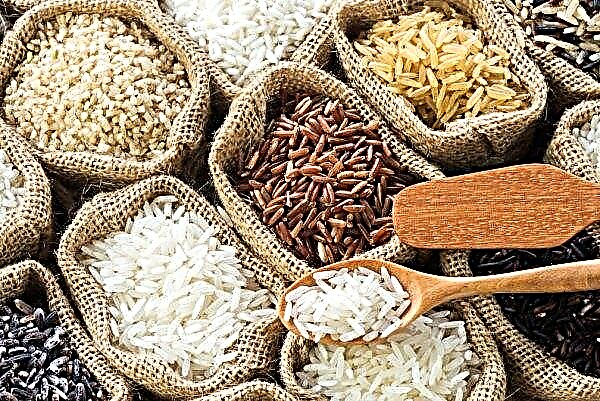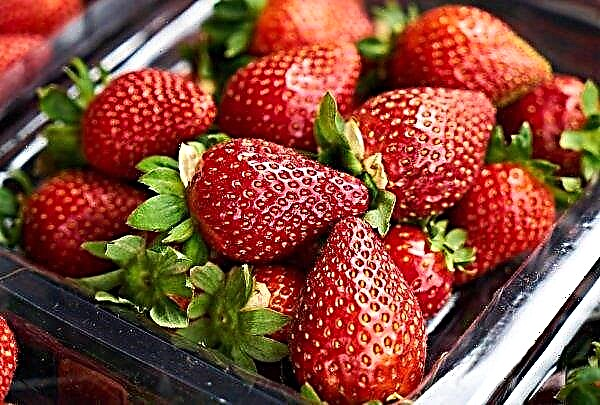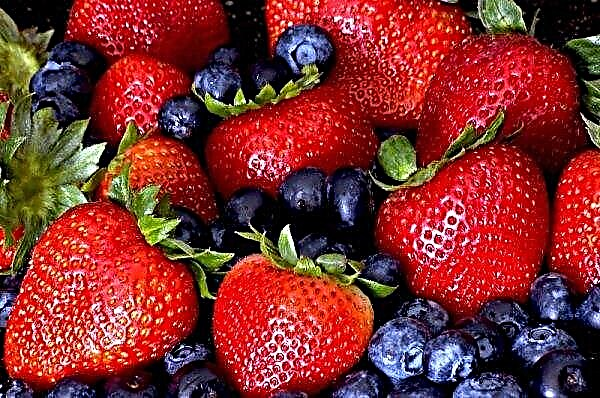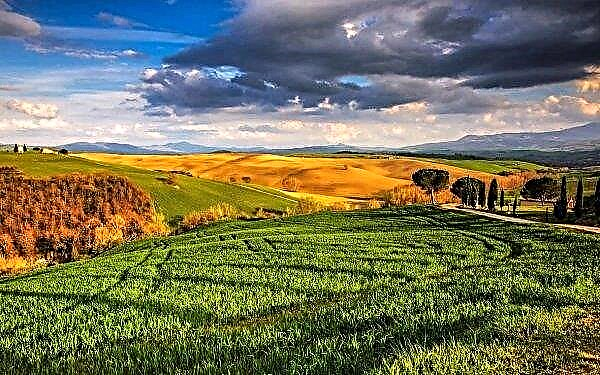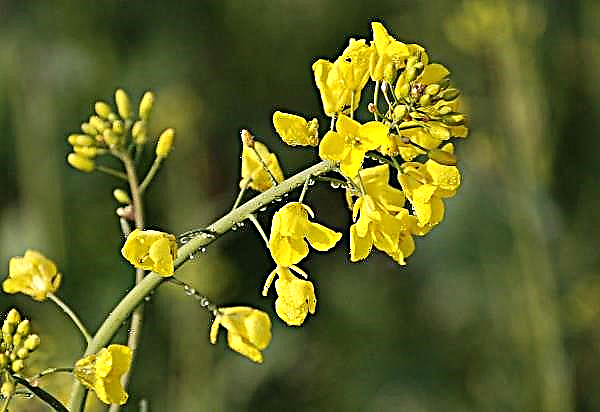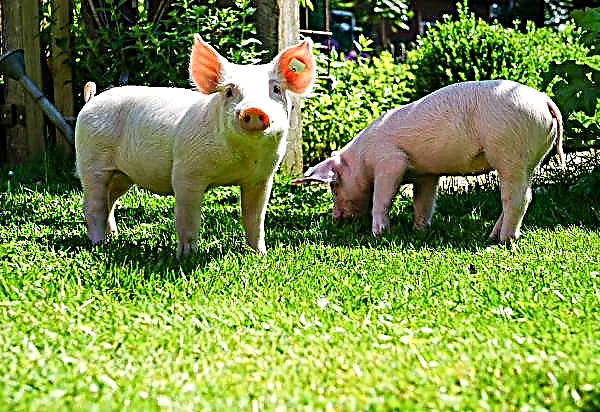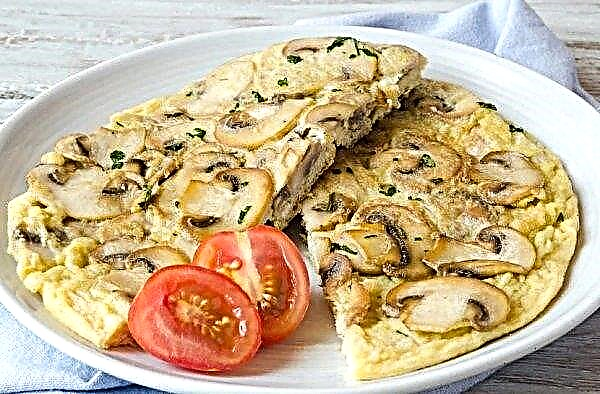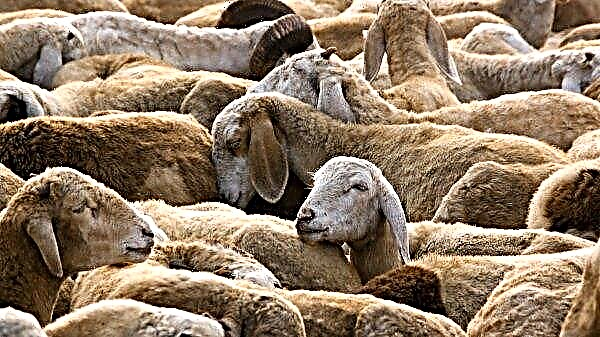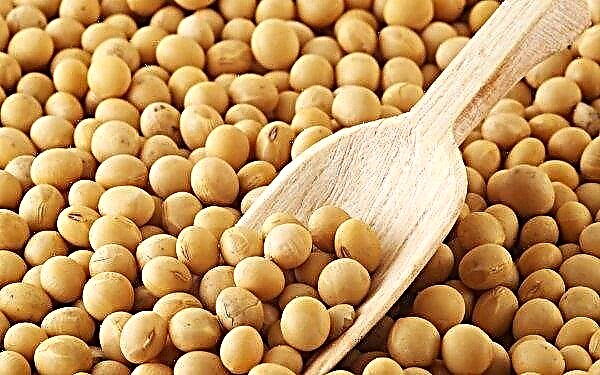In addition to keeping and caring for cattle, livestock breeders need to know how animals work. This fact-finding article talks about the structure of the skull of a cow and its features.
Cow skull anatomy
In the cranium of the cow there are two departments: the front and the brain. In the first section are the organs of vision, smell and taste, and in the second is the brain of the animal. 1 - the occipital bone; 2 - facial tubercle; 3 - parietal bone; 4 - temporal bone; 5 - frontal bone; 6 - maxillary bone; 7 - intermaxillary bone; 8 - nasal bone; 9 - a lacrimal bone; 10 - zygomatic bone; 11 - the lower jaw; 12 - the orbit; 13 - angle of the lower jaw
1 - the occipital bone; 2 - facial tubercle; 3 - parietal bone; 4 - temporal bone; 5 - frontal bone; 6 - maxillary bone; 7 - intermaxillary bone; 8 - nasal bone; 9 - a lacrimal bone; 10 - zygomatic bone; 11 - the lower jaw; 12 - the orbit; 13 - angle of the lower jaw
Consider what bones a cow skull consists of:
- The nape is rather narrow and small. Outside are muscle tubercles formed by small occipital bones. There are openings on the sides of the nape with short, bent inward radiant processes. Below are elongated hyoid openings. Inside there is a place for veins. This department is combined with the parietal.
- The parietal part. In calves, the crown makes up almost the entire part of the skull. With the growth of young animals, the crown is replaced by the frontal bones and gradually recedes to the occipital region. The parietal bones are involved in the formation of the temporal foramen. The posterior wall of the crown connects to the back of the head, and the parietal plates protect the cerebellum.
- The sphenoid bone is located in close proximity to the temporal part and the orbits. There are channels for nerve trunks in it, leading nerves to the eyes.
- The frontal bones. The frontal and temporal parts of the skull are formed. The nasal bone is thick and reaches the orbits, but the orbital-temporal section is separated from the nasal by the frontal crest. The frontal part ends with horny processes.
- The temporal bones are fused with the parietal and occipital departments. Zygomatic ridges are located on them, which form tubercles connecting the temple and cheekbone. In the temporal section there are openings leading to the tympanum.
- The lacrimal bones are attached to the frontal with the help of the cheekbones. They are separated from the nose by a small gap. There are holes in the lacrimal bones for the lacrimal sacs, and lacrimal channels to the orbits go from the fossa.
- Cheekbones are quite massive. They form the skeleton of the facial section.
- The jaws are dorsal. The lower jaw is more powerful and wider than the upper. In the depths are the jaw tubercle and the toothless edge. At the level of the first tooth there is an infraorbital foramen.
- Incisors are formed by plates and are similar to a roller. Alveoli for the formation of incisive teeth are absent.
- The palatine bones are highly developed, the hard palate covers most of the mouth, and the vertical palate is formed by the ethmoid bone.
- The vomer is a plate that connects the nasal and frontal sinuses, as well as the jaw. This bone has a rather complex structure.
- The ventral part is endowed with 8 alveoli for incisor teeth.
- The hyoid bone is a process, as well as the posterior branches leading to the larynx.
Important! In a newly born calf, the entire skull is connected by cartilaginous layers, which makes them mobile — it is important for calving. Bone hardness appears closer to 3 years, when the cartilage is replaced by bone.
What the head consists of
Now we find out what parts the cow’s head consists of and what differences they have.
Horns
Many representatives of cattle have horns. An exception is only specially bred breeds from which breeders have removed this trait. From an anatomical point of view, the horns are rigid bony formations that are located in the head area. Their growth is directly related to metabolism and is manifested by the appearance of rings. Inadequate feeding of calves can lead to stunted growth of horns.
Their growth is directly related to metabolism and is manifested by the appearance of rings. Inadequate feeding of calves can lead to stunted growth of horns.
Did you know? In newborn calves, horns are absent, after a month you can feel small tubercles, and at 2 months of age, the horns are already clearly visible.
Eyes
Cows have monocular vision due to the symmetrical arrangement of the eyes on the sides of the head. The eyes are large and framed by fairly long eyelashes, which grow not for beauty, but for orientation in space. The eyes are located in the bone hollows and have the following structure: the shape is round, slightly convex on the outside and flattened inside.
The eyes of cattle have the same connection with the brain as human eyes. They consist of 3 chambers (external, middle and internal). Protection against mechanical stress is due to eyelashes, eyebrows and a lacrimal apparatus.
Teeth and tongue
The structure of cow teeth is not the same as in humans. Incisors and anterior fangs are present only on the lower jaw. The upper jaw is covered with strong keratinized epithelium. A total of 32 teeth are located in the mouth. This jaw structure helps in tearing off strong grass. Food retention occurs with the help of lips and tongue.
All ruminants swallow food without chewing. After a while, they burp it, rub it with molars and swallow it again. A newborn calf already has 20 milk teeth. After 1.5 years, they are replaced by indigenous ones.
Did you know? Cows are known to have a sweet, bitter, sour, and salty taste. In addition, each animal has its own preferences in food.
The tongue of a cow is an accumulation of muscle fibers that enable it to move. It performs the following functions:
- food tasting;
- help with swallowing;
- palpation of objects;
- body skin care;
- contact with other animals.
 A calving cow with its help massages and cleans the skin of the calf.
A calving cow with its help massages and cleans the skin of the calf.The ears
The cattle hearing aid consists of the outer, middle and inner ear. The outer ear picks up sounds. It is represented by the auricle with fairly developed muscles, as well as the external auditory canal. The middle ear converts sound vibrations. This is the eardrum with a chain of auditory bones. The middle ear has a connection with the pharynx. The inner ear is composed of bone and webbed labyrinths.
Important! All cattle animals have an excellent, almost musical ear. They are able to remember individual sounds and even songs, and in addition they can distinguish the sound of different musical instruments.
This is not only the organ of hearing, but also the vestibular apparatus of the animal. So, all of the above information allows you to get complete knowledge about the structural features of the skull of a cow and find out what parts it consists of.


